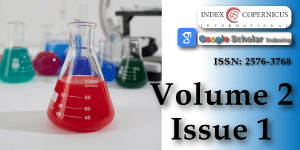Synthesis and Biological Evaluation of Fluorescein-Tagged 1-Methyl-o-carborane for Boron Neutron Capture Therapy
Main Article Content
Abstract
Fluorescein was conjugated with 1-methyl-o-carborane and the resulting bioconjugate was biologically evaluated through microscopic and flow cytometric studies in pancreatic cancer and squamous cell carcinoma cell lines. The uniform distribution of this bioconjugate, as well as its moderate cytotoxicity and higher boron content relative to present boronated delivery agents sodium borocaptate (BSH) and boronophenylalanine (BPA), provide justification for its further evaluation as a potential delivery agent for BNCT.
Article Details
Copyright (c) 2025 Lucas A Kuzmanic, Lauren E Zuidema, Jason A Misurelli, Kazuko Uno, Sherine F Elsawa, Masao Takagaki

This work is licensed under a Creative Commons Attribution 4.0 International License.
Yinghuai Z. Hosmane NS. Applications and perspectives of boron-enriched nanocomposites in cancer therapy. Future Medicinal Chemistry. 2013; 5: 705-714. Ref.: https://goo.gl/eZRN1b
Barth RF, Vicente MG, Harling OK, Kiger WS 3rd, Riley KJ, et al. Current status of boron neutron capture therapy of high grade gliomas and recurrent head and neck cancer. Radiat. Oncol. 2012; 7: 146. Ref.: https://goo.gl/9RAJEi
Hosmane NS, Maguire J. Zhu Y, Takagaki M. Boron and Gadolinium Neutron Capture Therapy for Cancer Treatment. Singapore: World Scientific Pub, 2012. 272. Ref.: https://goo.gl/ZV5n9C
Nakamura H. Liposomal Boron Delivery for Neutron Capture Therapy. Methods in Enzymology. 2009; 179-208. Ref.: https://goo.gl/RE4ZWR
Barth RF, Soloway AH, Brugger RM. Boron Neutron Capture Therapy of Brain Tumors: Past History, Current Status, and Future Potential. Cancer Investigation. 1996; 14: 534-550. Ref.: https://goo.gl/aLjkKb
Patel H, Takagaki M, Bode BP. Snajdr I, Devangi P. et al. Carborane-Appended Saccharides: Prime Candidates for Boron Neutron Capture Therapy (BNCT). Biochemical and Biophysical Journal of Neutron Capture Therapy & Cancer Treatments. 2013; 1: 15-21. Ref.: https://goo.gl/Bjm4n6
Varadarajan A, Hawthorne MF. Novel carboranyl amino acids and peptides: reagents for antibody modification and subsequent neutron-capture studies. Bioconjugate Chem. 1991; 2: 242−253. Ref.: https://goo.gl/dtmX34
Kusaka S, Hattori Y, Uehara K, Asano T, Tanimori S, et al. Synthesis of optically active dodecaborate-containing Lamino acids for BNCT. Appl Radiat Isot. 2011; 69: 1768−1770. Ref.: https://goo.gl/2Vemj7
Hattori Y, Kusaka S, Mukumoto M, Uehara K, Asano T, et al. Biological Evaluation of Dodecaborate-Containing L-Amino Acids for Boron Neutron Capturer Therapy. J Med Chem. 2012; 55: 6980–6984. Ref.: https://goo.gl/o6bZC9
Agarwal HK, Khalil A, Ishita K, Yang W, Nakkula RJ, et al. Synthesis and evaluation of thymidine-kinase 1-targeting carboranyl pyrimidine nucleoside analogs for boron neutron capture therapy of cancer. Eur J Med Chem. 2015; 100: 197-209. Ref.: https://goo.gl/iGQKtN
Swenson DH. Laster BH. Metzger RL. Synthesis and evaluation of boronated nitroimidazole for boron neutron capture therapy. J Med Chem. 1996; 39: 1540–1544. Ref.: https://goo.gl/oBKk2D
Mathew T, Kundan S, Abdulsamad MI, Menon S, Dharan BS, et al. Multiple muscular ventricular septal defects: use of fluorescein dye to identify residual defects. Ann Thorac Surg. 2014; 97: 27-28. Ref.: https://goo.gl/m6Hi89
Hui F, Nguyen CT, Bedggood PA, He Z, Fish RL, et al. Quantitative Spatial and Temporal Analysis of Fluorescein Angiography Dynamics in the Eye. PLoS One. 2014; 9: 11. Ref.: https://goo.gl/DjBKJM
Francaviglia N, Iacopino DG, Costantino G, Villa A, Impallaria P, et al. Fluorescein for resection of high-grade gliomas: A safety study control in a single center and review of the literature. Surg Neurol Int. 2017; 8: 145. Ref.: https://goo.gl/ToXJhB
Acerbi F, Cavallo C, Broggi M, Cordella R, Anghileri E, et al. Fluorescein-guided surgery for malignant gliomas: a review. Neurosurg Rev. 2014; 37: 547-57. Ref.: https://goo.gl/5QZGXw
Xuan S, Zhao N, Zhou Z, Fronczek FR, Vicente MG. Synthesis and in Vitro Studies of a Series of CarboraneContaining Boron Dipyrromethenes (BODIPYs). J Med Chem. 2016; 59: 2109−2117. Ref.: https://goo.gl/ccX6Y8
Gibbs JH, Wang H, Bhupathiraju NV, Fronczek FR, Smith KM, et al. Synthesis and properties of a series of carboranyl-BODIPYs. J Organomet Chem. 2015; 798: 209−213. Ref.: https://goo.gl/RWZsft
Chaari M, Gaztelumendi N, Cabrera-González J, Peixoto-Moledo P, Viñas C, et bl. Fluorescent BODIPY-Anionic Boron Cluster Conjugates as Potential Agents for Cell Tracking. Bioconjugate Chemistry. 2018; 29: 1763-1773. Ref.: https://goo.gl/kvwmai
Li Y, Rey-Dios R, Roberts DW, Valdés PA, Cohen-Gadol AA. Intraoperative fluorescence-guided resection of high-grade gliomas: a comparison of the present techniques and evolution of future strategies. World Neurosurg. 2014; 82: 175-185. Ref.: https://goo.gl/wZkoRa
Maugeri R, Villa A, Pino M, Imperato A, Giammalva GR, et al. With a Little Help from My Friends: The Role of Intraoperative Fluorescent Dyes in the Surgical Management of High-Grade Gliomas. Brain Sci. 2018; 8: pii: E31. Ref.: https://goo.gl/FRVgdU
Yinghuai Z, Peng AT, Carpenter K, Maguire JA, Hosmane NS, et al. Substituted Carborane-Appended Water-Soluble Single-Wall Carbon Nanotubes: New Approach to Boron Neutron Capture Therapy Drug Delivery. J Am Chem Soc. 2005; 127: 9875 – 9880. Ref.: https://goo.gl/n2DftV
Williamson Ether Synthesis. Williamson, A. Theory of Aetherification. Philosophical Magazine. 1850; 37: 350-356. Ref.: https://goo.gl/dXNNMg
Fotakis G, Timbrell JA. In vitro cytotoxicity assays: Comparison of LDH, neutral red, MTT and protein assay in hepatoma cell lines following exposure to cadmium chloride. Toxicology Letters. 2006; 160: 171-177. Ref.: https://goo.gl/wpCtu2





